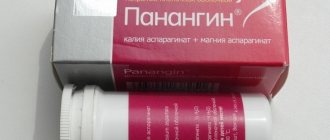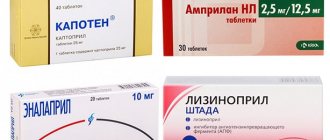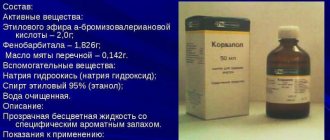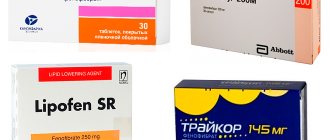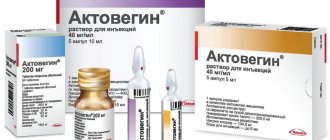Rosuvastatin is one of the drugs created to stabilize blood cholesterol levels. Its main function is the ability to reduce the synthesis of bad cholesterol in the human body and at the same time increase the production of “good” cholesterol. Rosuvastatin belongs to the latest - fourth - generation of lipid-lowering drugs, and is one of the most powerful statins on the medical market. Among other analogues, this drug has been studied most deeply.
Today we will present to your attention rosuvastatin from all sides - from instructions for use, indications and side effects, to analogues, expert opinions, prices, contraindications and reviews.
Statins
To reduce the risk of cerebrovascular accident, heart attack and acute coronary syndrome, it is necessary to control the level of cholesterol, and especially low-density proteins. In addition, the necessary measures must be taken to normalize it. At a young age this is not so difficult to do. In some cases, changing your diet and lifestyle is enough. For older individuals, things are much more complicated. They most often move little, are overweight, and have chronic pathologies, so pharmacotherapy comes to the rescue to maintain cholesterol within acceptable limits. Doctors recommend medications to patients that normalize fat metabolism and prevent vascular accidents.
The leaders among such drugs are statins. There are several generations of these agents with varying effectiveness on the pharmaceutical market. Well-known representatives of generations: the first - "Lovastatin", the second - "Fluvastatin", the third - "Atorvastatin", the fourth - "Crestor", which was the first to enter the market and gained popularity among both doctors and patients. Its active ingredient is rosuvastatin. Drugs with such an active ingredient are widely represented in the pharmacy chain. Among them are “Rozart”, “Akorta”, “Rozulip” and others.
The drug Rosuvastatin belongs to the category of statins. The doctor selects a specific remedy depending on the type of hyperlipoproteinemia. A good evidence base for reducing mortality from general and cardiovascular causes, as well as the incidence of cerebral and coronary disorders, has been obtained from the use of statins. The hypocholesterolemic effect of their use manifests itself quite quickly. They not only slow down the progression of atherosclerosis, but also have the following effects:
- inhibit thrombus formation;
- reduce the oxidation of low-density lipoproteins and the thrombogenic response;
- improve the functioning of the endothelium;
- provide physicochemical stabilization of the lipid core of the atherosclerotic plaque.
In addition, they have a slight anti-inflammatory effect. The main goal that is set when starting statin therapy is to reduce cholesterol by twenty-five percent. Treatment with drugs of this group is lifelong, since in case of withdrawal the clinical effect disappears quickly.
Let's look at their actions, indications, and side effects in more detail using the example of Rosuvastatin.
What is Rosuvastatin for? The instructions indicate that this is a hypolipidemic and hypocholesterolemic medicine, which doctors recommend both for the prevention and treatment of hypercholesterolemia, atherosclerosis, heart attack and other ailments. The drug belongs to the group of fourth-generation statins and is considered the first medicine that can cause the return of atherosclerosis of the arteries that supply the heart muscle. This phenomenon has been proven in clinical studies. The greatest effect from taking it is achieved if the patient follows a diet throughout the entire period of treatment with this drug. The maximum effect is observed at the end of a month's use. The effectiveness of the drug "Rosuvastatin" does not depend on food intake or time of day, which is very convenient for individuals. Another important advantage is its better tolerability compared to other representatives of this group: Atorvastatin, Fluvastatin, Simvastatin and others.
Description and composition
The active substance of the drug is calcium rosuvastatin. The auxiliary ingredients included in the composition are as follows:
- pregelatinized starch;
- microcrystalline cellulose;
- magnesium stearate;
- povidone;
- colloidal anhydrous silicon dioxide.
The film shell is made of titanium dioxide, hypromellose, macrogol, lactose monohydrate, triacetin.
The dosage form of the drug is film-coated biconvex white tablets. Depending on the dosage of Rosuvastatin - five, ten, twenty, forty milligrams, the corresponding numbers are engraved on one side of the tablet.
Composition and effect of the drug, indications for use
The tablet prescription in Latin is written as Rosuvastatin. The drug belongs to the group of lipid-lowering drugs (statins) and is an inhibitor of HMG-CoA reductase. Designed to reduce the production of own cholesterol by liver tissue and reduce the volume of harmful lipoproteins (having a low density) in the blood plasma.
One tablet, coated with a soluble film coating, contains the active component of rosuvastatin calcium (in a dosage of 5 to 40 mg) and excipients in the form of cellulose, calcium dihydrate, magnesium stearate, povidone, corn starch and others. Manufacturers of the original drug Rosuvastatin are Russian pharmaceutical companies, JSC Vertex, LLC Izvarino Pharma.
Foreign manufacturers of drugs based on the substance rosuvastatin AstraZeneca, Gedeon Richter, KRKA, TEVA and others. The tablets can be stored for 3 years from the date indicated on the carton at a temperature below 25 °C. Rosuvastatin is dispensed from pharmacies with a doctor's prescription.
Indications for use:
- new-onset hypercholesterolemia;
- familial hypercholesterolemia of the heterozygous or homozygous type;
- high concentration of triglycerides in blood plasma;
- pathological state of capillaries in connection with manifestations of atherosclerosis, including progression of the disease (as a measure of complex treatment);
- prevention of cardiovascular diseases, including in elderly patients.
Medicines of the statin group are prescribed to patients who have not been helped by a diet combined with increased physical activity, frequent exposure to air, and quitting smoking and drinking alcohol.
Pharmacodynamics
“Rosuvastatin” (we’ll talk about what it helps with later) is an inhibitor of the enzyme HMG-CoA reductase. The main target of the drug is the liver, i.e. the organ where cholesterol is produced and the process of breakdown of low-density lipoproteins occurs. Thanks to its action, the concentration of both triglycerides and total cholesterol decreases. And the level of high-density proteins, on the contrary, increases. A week after taking Rosuvastatin tablets, the therapeutic effect appears, and after fourteen days it reaches ninety percent of the maximum possible. To maintain it, constant medication is required.
Pharmacokinetics
The absolute bioavailability of the drug is about twenty percent. The maximum concentration in blood plasma appears five hours after administration. Approximately ninety percent of the drug interacts with plasma proteins. Only ten percent of the drug is metabolized, which occurs in the liver.
About 90 percent of the drug is excreted unchanged from the individual’s body through the intestines. The remaining part is kidneys.
The systemic effect of Rosuvastatin tablets increases in proportion to the dose. With regular and daily use, the pharmacokinetic parameters do not change. In addition, the age and gender of the individual also do not affect pharmacokinetics.
Interaction with other drugs
Having figured out how to take rosuvastatin, it is now worth mentioning its acceptable and unacceptable combinations in treatment with other drugs. Based on the results of numerous studies, it is reliably known that, like other lipid-lowering drugs, rosuvastatin has its own characteristics in interaction with other medications.
- Cyclosporine. Concurrent use is contraindicated.
- Fibrates - fenofibrate and others - due to an increased risk of myopathy progression, the dose at the beginning of Rosuvastatin therapy should be 5 mg. A dosage of 40 mg is strictly not recommended. In blood plasma, the use of fibrates causes changes in statin concentrations.
- Nicotinic acid in lipid-lowering doses above 1000 mg per day is also not used in parallel due to the risk of myopathy.
- Antacids. If combined use is necessary, administration is possible only with a two-hour interval between medications.
- Ezetimibe. The price of concomitant use is a significant increase in the chances of developing adverse reactions.
- HIV protease inhibitors - combination with rosuvastatin is not recommended due to a pronounced increase in exposure to the statin.
- Fusidic acid together with rosuvastatin can provoke rhabdomyolysis. If there is an urgent need to use fusidic acid, statin treatment is temporarily canceled.
- Erythromycin. Simultaneous use with it helps to reduce the plasma content and reduce the concentration of rosuvastatin.
- Vitamin K preparations (warfarin, its antagonist, is most often prescribed). Prescribing these medications together with statins leads to a prolongation of prothrombin time and INR, and if rosuvastatin is abandoned or its dosage is reduced, on the contrary, to a decrease in INR (one of the laboratory parameters determined to assess blood coagulation).
- Oral contraceptives and hormone replacement therapy are taken into account when choosing dosages. In general, the therapy was tolerated satisfactorily by patients.
Contraindications
Depending on the dosage of the drug, contraindications to its use have some differences. For a daily dose of five, ten and twenty milligrams, its intake is prohibited:
- in the absence of adequate methods of contraception;
- hypersensitivity to one of the ingredients of the drug;
- simultaneous use with Cyclosporine;
- myopathies;
- lactase deficiency, as well as lactose intolerance;
- kidney failure;
- tendency to develop myotoxic complications;
- liver diseases in the active stage;
- natural feeding and while waiting for the baby;
- up to eighteen years of age.
The above doses are allowed to be taken with caution in the following cases:
- there is a risk of primary muscle damage;
- age less than sixty-five years;
- drinking large amounts of alcohol-containing drinks;
- Mongoloid race;
- combined use with medications from the group of fibric acid derivatives;
- conditions in which an increase in plasma concentration of the drug was observed;
- general purulent infection;
- history of liver pathology;
- hypotension;
- injuries;
- uncontrollable seizures;
- extensive surgical interventions;
- severe electrolyte, metabolic and endocrine disruptions.
Taking the drug "Rosuvastatin" in a daily dosage of forty milligrams is contraindicated:
- for liver diseases in the active phase;
- simultaneous use with Cyclosporine and fibrates;
- lactase deficiency, as well as lactose intolerance;
- pregnancy;
- natural feeding;
- lack of adequate contraception in women if reproductive function is preserved;
- moderate renal failure;
- abuse of alcoholic beverages;
- long-term persistent deficiency of thyroid hormones;
- family or personal history of muscle ailments;
- myotoxicity due to a history of taking other lipid-lowering drugs;
- individuals of the Mongoloid race.
It is permissible to take this dose of medication with caution in the following situations:
- Age over sixty-five years.
- Uncontrollable seizures.
- Severe endocrine, electrolyte or metabolic disturbances.
- Injuries.
- History of liver pathology.
- Hypotension.
- Sepsis.
- Mild renal failure.
Indications for use
Doctors recommend the use of Rosuvastatin for the following conditions:
- Primary prevention of arterial revascularization, heart attack, cerebrovascular accident in adults without clinical coronary heart disease, but with a high risk of its occurrence: for males - over fifty years of age, for females - over sixty years of age; the concentration of C-reactive protein is higher than normal; the presence of at least one risk factor - family history of early onset of coronary artery disease, smoking, hypertension, low levels of high-density proteins.
- Hypertriglyceridemia (as a dietary supplement).
- Primary or mixed hypercholesterolemia (when diet and other non-drug treatments do not provide the required effect).
- To slow the progression of atherosclerosis.
- Familial homozygous hypercholesterolemia (as an adjunct to diet and other lipid-lowering therapy).
Use during pregnancy and breastfeeding
According to the official instructions for use, Rosuvastatin tablets should not be taken while expecting a baby and while breastfeeding. Representatives of the fair sex who have not lost the ability to conceive should use proven contraceptives when taking pills. Cholesterol, like other products of its biosynthesis, is important for the development of the fetus; the probable danger of inhibiting HMG-CoA reductase outweighs the benefit of using the drug in women expecting the birth of a baby. If pregnancy occurs during pharmacotherapy with this medicine, immediately stop taking it. Due to the fact that there is no information about the penetration and excretion of Rosuvastatin from breast milk, its use is prohibited during this period.
Directions for use and doses
The tablet is swallowed whole; it does not need to be crushed or chewed. Take with sufficient volume of liquid. According to the instructions for use, Rosuvastatin can be taken at any time, regardless of meals. Before treatment, doctors recommend that the individual begin to adhere to a hypocholesterolemic diet, which should be followed throughout the entire period of taking the medication. The daily dose is selected for each patient depending on the goal pursued and the therapeutic response to treatment with this medication. In this case, laboratory data (lipid concentration) are also taken into account.
For the initial dose, a daily dose of 5 mg is indicated, sometimes doctors immediately prescribe 10 mg of Rosuvastatin. In this case, the risk of complications in the heart and blood vessels and adverse reactions must be taken into account. In the future, if necessary, the dose may be increased, but not earlier than after four weeks. Taking 40 mg is indicated only for individuals with a high risk of complications of blood vessels and heart, for example, with familial hypocholesterolemia and those who did not achieve the required result when taking 20 mg. Such patients are under special medical supervision. Observation of lipid metabolism indicators is carried out two or four weeks after taking the tablets.
In patients with mild or moderate renal failure, no dose adjustment is required. They are recommended to take 5 mg of Rosuvastatin per day. For elderly people, dose adjustment is also not indicated.
Composition and dosage form
Rosuvastatin belongs to the lipid-lowering drugs of the statin group. Subclass – HMG-CoA reductase inhibitors. Thanks to this pharmacological action, the intracellular concentration of lipids decreases, the activity of receptors for LDL molecules compensatory increases and, as a result, they are more quickly catabolized and removed from the bloodstream. In addition, like other statins, rosuvastatin has a positive effect on the endothelium, preventing its dysfunction (inhibits the development of early atherosclerosis at the preclinical stage), on the vascular wall (protects it from the harmful fraction of cholesterol). The main isoenzyme involved in the metabolism of rosuvastatin is CYP2C9
The release form of rosuvastatin is tablets. They are pink, convex on both sides, covered with film. At the fault, the internal substance is close in color to white. The main active ingredient in the tablet, rosuvastatin calcium, is available in 5 mg, 10 mg and 20 mg doses. Depending on the dosage, the shape of the tablets differs. The dosage options for the active substance are 5 mg and 20 mg, round in shape, and elongated in 10 mg and 40 mg.
In pharmacies you can purchase either cardboard packages with blisters of 6, 10, 14, 15 or 30 tablets each, depending on the dose, or 30 and 60 pieces in jars. In addition to the main component (actually, rosuvastatin - the name of the international name), the drug contains a number of additional substances: povidone, corn starch, magnesium stearate, microcrystalline cellulose. The shell contains a dry mixture: talc, macrogol, titanium dioxide, iron oxide (red). Depending on the manufacturer, this composition may vary slightly.
Above we looked at the composition of the original rosuvastatin from the manufacturer Canonpharma (country: Russia). Also today we will look at analogues of this drug according to the drug radar (medicine register), and determine which manufacturer on pharmacy shelves is better in price and quality.
Mandatory manipulations required before and during therapy with Rosuvastatin
If an individual has risk factors for myopathy, including extreme rhabdomyolysis, then the doctor will first consider the balance of danger and possible benefit of therapy. Next, he makes a decision on treatment with Rosuvastatin, the instructions for use of which contain instructions for monitoring such patients during therapy. The medical professional informs the patient that if he suddenly experiences spasms, muscle weakness or pain that occurs against a background of fever and general malaise, he should immediately consult his doctor. He will order a creatine phosphokinase activity test in these patients.
The medication is discontinued:
- When the activity of creatine phosphokinase increases more than five times compared to the permissible norm.
- Sharply expressed signs from the muscles that cause discomfort, but the activity of creatine phosphokinase does not exceed the permissible maximum limit by more than five times.
If the symptoms disappear and the activity of creatine phosphokinase returns to the permitted limits, it is allowed to reconsider the use of this drug, the instructions say. "Rosuvastatin" in such cases is indicated in smaller doses and with particularly careful monitoring of the individual. It should be noted that in the absence of symptoms, daily monitoring of creatine phosphokinase activity is not required, since it is impractical.
It is undesirable to take this drug together with Gemfibrozil, since the latter increases the risk of neuromuscular diseases. When prescribing such a combination, the risks and expected benefits must be weighed.
All patients, two to four weeks after increasing the dose or starting therapy with Rosuvastatin, are shown monitoring of lipid metabolism, based on the results of which a decision on correction is made, if necessary.
Rosuvastatin
Renal dysfunction
In patients receiving high doses of rosuvastatin (particularly 40 mg/day), tubular proteinuria was observed, which was detected using test strips and in most cases was intermittent or short-term. Such proteinuria does not indicate acute illness or progression of concomitant renal disease. The incidence of serious renal dysfunction observed in post-marketing studies of rosuvastatin is higher when taking a dose of 40 mg/day. In patients taking Rosuvastatin at a dose of 30 or 40 mg/day, it is recommended to monitor renal function during treatment (at least once every 3 months).
Effect on the musculoskeletal system
The following musculoskeletal effects have been reported with rosuvastatin at all doses, but particularly at doses greater than 20 mg/day: myalgia, myopathy, and in rare cases, rhabdomyolysis. Very rare cases of rhabdomyolysis have been reported with the simultaneous use of HMG-CoA reductase inhibitors and ezetimibe. This combination should be used with caution, as pharmacodynamic interactions cannot be excluded.
As with other HMG-CoA reductase inhibitors, the incidence of rhabdomyolysis with post-marketing use of rosuvastatin is higher when using a dose of 40 mg/day.
Determination of serum CPK activity
Serum CPK activity cannot be determined after intense physical exercise and in the presence of other possible reasons for an increase in its activity; this may lead to incorrect interpretation of the results obtained. If the initial serum CPK activity is significantly exceeded (5 times higher than the upper limit of normal), a repeat analysis should be performed after 5-7 days. Therapy should not be started if the results of a repeat analysis confirm the initial high serum CPK activity (more than 5 times the upper limit of normal).
Before starting therapy
Depending on the daily dose, Rosuvastatin should be administered with caution to patients with existing risk factors for myopathy/rhabdomyolysis.
These factors include:
- renal dysfunction,
- hypothyroidism,
- history of muscle diseases (including family history),
- history of myotoxic effects when taking other HMG-CoA reductase inhibitors or fibrates,
- excessive alcohol consumption,
- age over 65 years,
- conditions in which the concentration of rosuvastatin in the blood plasma may increase,
- simultaneous use of fibrates.
In such patients, it is necessary to evaluate the risks and possible benefits of therapy. Clinical monitoring is also recommended. If the initial serum CK activity is higher than 5 times the upper limit of normal, therapy with Rosuvastatin cannot be started.
During drug therapy
The patient should be informed to immediately report to the doctor if muscle pain, muscle weakness or spasms occur unexpectedly, especially in combination with malaise and fever. In such patients, serum CPK activity should be determined. Therapy should be discontinued if serum CPK activity is significantly increased (more than 5 times the upper limit of normal), or if muscle symptoms are severe and cause daily discomfort (even if serum CPK activity is no more than 5 times the upper limit of normal). exceeds the upper limit of normal). If symptoms disappear and serum CPK activity returns to normal, resumption of use of Rosuvastatin or other HMG-CoA reductase inhibitors in lower doses should be considered under close medical supervision. Monitoring serum CPK activity in the absence of symptoms is impractical.
Very rare cases of immune-mediated necrotizing myopathy have been reported with clinical manifestations in the form of persistent weakness of the proximal muscles and increased CPK activity in the blood serum during therapy or upon discontinuation of the use of HMG-CoA reductase inhibitors, including rosuvastatin. Additional studies of the muscular and nervous system, serological studies, and therapy with immunosuppressive drugs may be required. There were no signs of increased effects on skeletal muscles when taking rosuvastatin and concomitant therapy. However, an increase in the number of cases of myositis and myopathy has been reported in patients taking other HMG-CoA reductase inhibitors in combination with fibric acid derivatives (for example, gemfibrozil), cyclosporine, nicotinic acid in lipid-lowering doses (more than 1 g / day), antifungals - azole derivatives, HIV protease inhibitors and macrolide antibiotics.
When used simultaneously with certain HMG-CoA reductase inhibitors, gemfibrozil increases the risk of developing myopathy. Thus, the simultaneous use of Rosuvastatin and gemfibrozil is not recommended. The benefits of further changes in plasma lipid concentrations when using the drug Rosuvastatin in combination with fibrates or nicotinic acid in lipid-lowering doses must be carefully weighed against the possible risks. The drug Rosuvastatin at a dose of 40 mg/day is contraindicated for combination therapy with fibrates.
Rosuvastatin should not be used simultaneously or within 7 days after discontinuation of systemic fusidic acid therapy. In patients in whom the use of fusidic acid is considered necessary, statin therapy should be discontinued for the entire duration of fusidic acid therapy. There have been reports of rhabdomyolysis (including death in some cases) in patients receiving fusidic acid concomitantly with statins. The patient should seek immediate medical attention if any symptoms of muscle weakness, pain, or tenderness occur.
Therapy with Rosuvastatin can be resumed 7 days after the last dose of fusidic acid.
In exceptional cases, when long-term use of systemic fusidic acid is required, for example, in the treatment of severe infections, the need for simultaneous use of Rosuvastatin and fusidic acid should be considered individually and subject to careful medical supervision.
Due to the increased risk of rhabdomyolysis, Rosuvastatin should not be used in patients with acute conditions that may lead to myopathy or conditions predisposing to the development of renal failure (for example, sepsis, hypotension, major surgery, trauma, severe metabolic, endocrine or electrolyte disturbances , uncontrollable seizures).
2-4 weeks after the start of treatment and/or when the dose of Rosuvastatin is increased, monitoring of lipid metabolism parameters is necessary (dose adjustment is required if necessary).
Liver
Depending on the daily dose, Rosuvastatin should be used with caution in patients with excessive alcohol consumption and/or in patients with a history of liver disease, or its use is contraindicated (see sections "Contraindications" and "Precautions").
It is recommended to determine liver function tests before the start of therapy and 3 months after its start. The use of the drug Rosuvastatin should be discontinued or the dose of the drug should be reduced if the activity of “liver” transaminases in the blood serum is 3 times higher than the upper limit of normal.
In patients with hypercholesterolemia due to hypothyroidism or nephrotic syndrome, underlying diseases should be treated before starting treatment with Rosuvastatin.
Ethnic characteristics
During pharmacokinetic studies, an increase in the plasma concentration of rosuvastatin was noted in representatives of the Mongoloid race compared to representatives of the Caucasian race.
Interstitial lung disease
Isolated cases of interstitial lung disease have been reported with the use of certain HMG-CoA reductase inhibitors, especially over long periods of time. Manifestations of the disease may include shortness of breath, non-productive cough and deterioration in general health (weakness, weight loss and fever).
If interstitial lung disease is suspected, therapy with HMG-CoA reductase inhibitors should be discontinued.
Diabetes mellitus type 2
In patients with glucose concentrations between 5.6 and 6.9 mmol/L, rosuvastatin therapy was associated with an increased risk of developing type 2 diabetes mellitus.
HIV protease inhibitors
Concomitant use of the drug with HIV protease inhibitors is not recommended (see section “Interaction with other drugs”).
Special information on excipients
The drug Rosuvastatin contains lactose and is therefore contraindicated in patients with lactose intolerance, lactase deficiency, and glucose-galactose malabsorption syndrome.
Monitoring the condition of the kidneys, liver and lungs
Monitoring of liver function indicators is done before starting treatment with Rosuvastatin, and three months later. If hepatic transaminases in the blood serum exceed more than three times, the drug should be discontinued or the dose adjusted downwards. In accordance with the instructions for use, Rosuvastatin is not prescribed before treating underlying diseases such as nephrotic syndrome or hypothyroidism that provoke hypercholesterolemia.
If interstitial lung disease is suspected, accompanied by the following symptoms: weight loss, fever, weakness, nonproductive cough and shortness of breath, therapy with Rosuvastatin is discontinued.
Tubular proteinuria occurs in individuals taking high doses of the drug Rosuvastatin (forty milligrams). For individuals taking tablets at this dosage, it is necessary to organize monitoring of kidney parameters for the entire period of treatment.
Rosuvastatin-Vial
Renal effects
In patients receiving high doses of Rosuvastatin Vial (mainly 40 mg), tubular proteinuria was observed, which in most cases was transient. This proteinuria did not indicate acute kidney disease or progression of kidney disease. In patients taking the drug at a dose of 40 mg, it is recommended to monitor renal function parameters during treatment.
From the musculoskeletal system
When using the drug Rosuvastatin-Vial in all doses and, in particular, when taking doses of the drug exceeding 20 mg, the following effects on the musculoskeletal system were reported: myalgia, myopathy, and in rare cases, rhabdomyolysis.
Determination of creatine phosphokinase
Determination of CPK activity should not be carried out after intense physical activity or in the presence of other possible reasons for increased CPK activity, which may lead to incorrect interpretation of the results obtained. If the initial CPK activity is significantly increased (5 times higher than the upper limit of normal), a repeat measurement should be taken after 5-7 days. Therapy should not be started if a repeat test confirms the initial CPK activity (more than 5 times the upper limit of normal).
Before starting therapy
When prescribing Rosuvastatin-Vial, as well as when prescribing other HMG-CoA reductase inhibitors, caution should be exercised in patients with existing risk factors for myopathy/rhabdomyolysis; it is necessary to consider the balance of risk and possible benefit of therapy and conduct clinical observation.
During therapy
The patient should be informed to immediately report to the doctor the unexpected onset of muscle pain, muscle weakness or cramps, especially in combination with malaise and fever. In such patients, CPK activity should be determined. Therapy should be discontinued if CPK activity is significantly increased (more than 5 times the upper limit of normal) or if muscle symptoms are severe and cause daily discomfort (even if CPK activity is 5 times less than the upper limit of normal). normal limit). If symptoms disappear and CPK activity returns to normal, re-prescribing the drug or other HMG-CoA reductase inhibitors in lower doses should be considered with careful monitoring of the patient.
Routine monitoring of CPK activity in the absence of symptoms is impractical.
Very rare cases of immune-mediated necrotizing myopathy have been reported with clinical manifestations of persistent proximal muscle weakness and increased serum CPK levels during treatment or upon discontinuation of statins, including rosuvastatin. Additional studies of the muscular and nervous system, serological studies, and therapy with immunosuppressive drugs may be required.
There were no signs of increased effects on skeletal muscles when taking rosuvastatin and concomitant therapy. However, an increased incidence of myositis and myopathy has been reported in patients taking other HMG-CoA reductase inhibitors in combination with fibric acid derivatives, including gemfibrozil, cyclosporine, niacin, azole antifungals, protease inhibitors and macrolide antibiotics. Gemfibrozil increases the risk of myopathy when used together with certain HMG-CoA reductase inhibitors. Therefore, concomitant use of rosuvastatin and gemfibrozil is not recommended. The risk/benefit ratio should be carefully weighed when using rosuvastatin and fibrates or lipid-lowering doses of nicotinic acid together. Taking the drug at a dose of 40 mg together with fibrates is contraindicated.
2-4 weeks after the start of treatment and/or when the dose is increased, monitoring of lipid metabolism is necessary (if necessary, dose adjustment is required).
Liver
It is recommended to determine liver function indicators before starting therapy and 3 months after starting therapy. The drug should be discontinued or the dose reduced if serum transaminase activity is 3 times higher than the upper limit of normal.
In patients with hypercholesterolemia due to hypothyroidism or nephrotic syndrome, treatment of underlying diseases should be carried out before starting treatment with the drug.
Special populations. Ethnic groups
During pharmacokinetic studies among Chinese and Japanese patients, an increase in systemic concentrations of rosuvastatin was noted compared with values obtained among Caucasian patients.
HIV protease inhibitors
Concomitant use of the drug with HIV protease inhibitors is not recommended.
Lactose
The drug should not be used in patients with lactase deficiency, galactose intolerance and glucose-galactose malabsorption.
Interstitial lung disease
Isolated cases of interstitial lung disease have been reported with some statins, especially over long periods of use. Manifestations of the disease may include shortness of breath, non-productive cough and deterioration in general health (weakness, weight loss and fever). If interstitial lung disease is suspected, statin therapy should be discontinued.
Diabetes mellitus type 2
In patients with glucose concentrations from 5.6 to 6.9 mmol/l, therapy with Rosuvastatin-Vial was associated with an increased risk of developing type 2 diabetes mellitus.
Impact on the ability to drive vehicles and operate machinery
No studies have been conducted to study the effect of the drug Rosuvastatin-Vial on the ability to drive a vehicle and use machinery. Caution should be exercised when driving vehicles or doing work that requires increased concentration and speed of psychomotor reactions (dizziness may occur during therapy).
Adverse events associated with taking the drug
With Rosuvastatin therapy, side effects are minor and go away on their own. Their occurrence often depends on the dose taken. The following violations occur:
- The occurrence of diabetes mellitus.
- Angioedema.
- Increased activity of liver transaminases.
- Dizziness, headache.
- Pancreatitis, epigastric pain, nausea, constipation.
- Rash and itching on the dermis, urticaria.
- Asthenic syndrome.
- Myalgia, myopathy.
- Proteinuria - in most cases it goes away or decreases during therapy. Its appearance does not mean the progression of existing or the occurrence of acute kidney pathology.
- Individuals taking Rosuvastatin had some changes in laboratory tests, namely: increased levels of bilirubin, sugar, increased activity of alkaline phosphatase and gammaglutamyl transpeptidase.
When taking a large number of milligrams, and especially more than 20, Rosuvastatin negatively affects the musculoskeletal system, causing phenomena such as neuromuscular diseases, muscle pain, and in isolated cases extreme myopathy with or without acute renal failure her. An increase in the activity of an enzyme contained in skeletal muscle fibers (creatine phosphokinase), associated with taking large doses, is not typical for all individuals. However, when it exceeds the upper acceptable limit by more than five times, the medication is discontinued.
In case of overdose, i.e. When taking several daily doses at the same time, the pharmacokinetics of the drug does not change. There is no specific treatment for this condition. Conventional therapy is indicated, aimed at relieving symptoms and manipulations that help maintain vital systems and organs.
Side effects
If you follow medical recommendations and prescribed daily doses of the medication, rosuvastatin rarely causes side effects. Otherwise, if treated incorrectly, the drug can bring both benefit and harm. The occurrence of side effects is ordered according to the WHO classification: very often, often, sometimes, isolated cases, rare, purity unknown. Now we will look at exactly what side effects are typical and should be taken into account for this medicine.
- Humoral regulation disorders: development of non-insulin-dependent diabetes mellitus (DM) type 2.
- Immunity and reactivity disorders: hypersensitivity reactions, urticaria, edema.
- Central nervous system – pain in the head, dizziness.
- Bone and muscle apparatus - muscle pain (myalgia), myopathies, rhabdomyolysis due to renal failure, in very rare cases (1 in 10,000) - immune-mediated necrotizing myopathy. Rarely – arthralgia, myositis. It is important to monitor the level of activity of the creatine phosphokinase enzyme and if the concentration increases significantly (five times or more than this value), treatment with rosuvastatin is discontinued.
- Gastrointestinal organs - abdominal pain, constipation, nausea.
- Urinary system - protein in the urine (proteinuria), usually regresses over the course of treatment and is not a marker of any serious renal pathology.
- Skin and pancreas – itching, urticaria, erythematous rash.
- Liver - dose-dependent changes in liver enzymes - transaminases and any increase in them.
- Laboratory parameters - bilirubin, alkaline phosphatase, gamma-glutamine transpeptidase activity may increase, and in rare cases, functional complaints from the thyroid gland may be observed.
- Other symptoms are asthenia.
Patients often ask the question: does the temperature increase when taking rosuvastatin? No, it doesn't increase. I would also like to note that statins are not compatible with alcohol, so patients should stop drinking alcohol during the treatment period, otherwise the likelihood of developing side effects increases significantly, but, alas, there is no possible benefit.
Interaction with other drugs
The official instructions for the use of Rosuvastatin pay a lot of attention to this problem. There are a sufficient number of medications, the joint use of which requires adjustment of the dose of Rosuvastatin. Therefore, before using the drug, you should carefully read its instructions and if you have any questions, be sure to consult your doctor. Caution should be exercised when taken together with transport protein inhibitors, lipid-lowering medications, antacids, antibiotics of certain groups, antifungals, vitamin K antagonists, hormones, including hormonal contraceptives.


